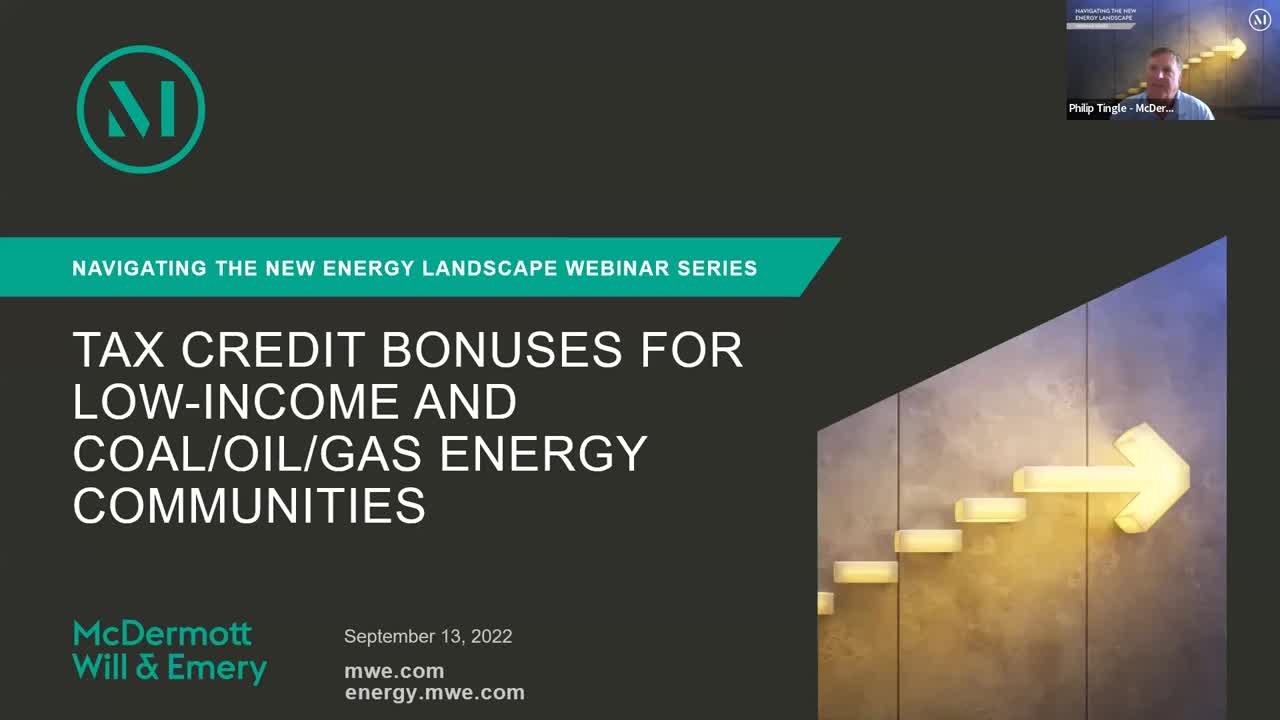On September 13, McDermott Partners Heather Cooper and Philip Tingle provided a detailed overview of the bonus tax credits under the Inflation Reduction Act of 2022 for projects satisfying low-income thresholds or built-in energy communities with ties to coal, oil and natural gas, including the technical requirements for each bonus and how these new rules will impact deal pipeline, planning and negotiations.

Below are key takeaways from the discussion:
1. There is an annual capacity limitation of 1.8 gigawatts direct current for low-income bonuses. It’s unknown whether this capacity will be allocated to projects on a first-come, first-served basis or shared amongst all applicants annually in the event capacity is reached. The Internal Revenue Service must provide guidance on this point within 180 days of enactment.
2. Projects that fail to satisfy relevant low-income/poverty metrics are subject to recapture (with a one-time opportunity to cure). It remains to be seen whether circumstances outside taxpayer control (e.g., local economic improvement) will trigger recapture.
3. At present, it is difficult to transact on the energy community bonus-based projects located in brownfield or MSA/non-MSA because of a lack of guidance. Projects located in census tracts with retired coal fired EGUs or coal mines, however, can be transacted based on the statute alone.
4. Projects will require researching, tracking and targeting areas where coal mines closed, coal fired EGUs retired and (after relevant guidance is released) brownfields are located.
To access past webinars in the Navigating the New Energy Landscape series and to begin receiving Energy updates, including invitations to the webinar series, please click here.
read more

 Subscribe
Subscribe
